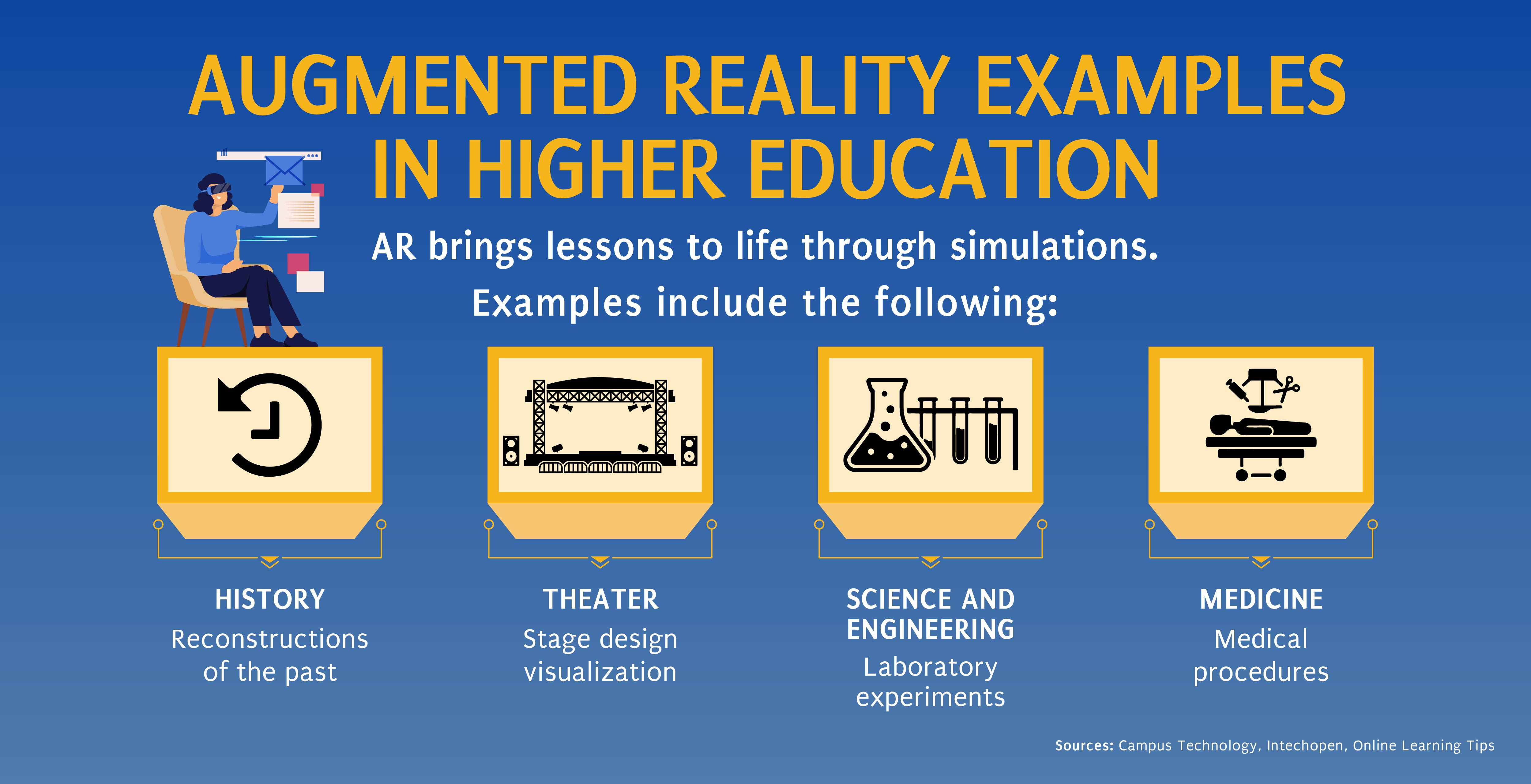Introduction to Augmented and Virtual Reality Development

Augmented reality (AR) and virtual reality (VR) are two of the most exciting and rapidly developing technologies today. They have the potential to revolutionize the way we interact with the world around us, and they are already being used in a wide range of applications, from gaming and entertainment to healthcare and education.

Augmented reality superimposes digital information on the real world, giving users a new way to view and interact with their surroundings. For example, an AR app could show you directions to a store on your smartphone screen, or it could overlay a virtual dinosaur skeleton on your kitchen table.

Virtual reality creates a fully immersive digital environment that users can explore and interact with. VR headsets block out the real world and replace it with a computer-generated one. This can be used to create realistic simulations, such as training programs for pilots or surgeons, or it can be used to create immersive entertainment experiences, such as VR games or movies.
Developing AR and VR applications requires specialized knowledge and skills. However, the basic principles of development are the same for both technologies. In this introduction, we will cover the basics of AR and VR development, including:
- The different types of AR and VR devices
- The software development kits (SDKs) that are used to create AR and VR apps
- The key challenges in AR and VR development
We will also provide some tips for getting started with AR and VR development.## Introduction To Augmented And Virtual Reality Development
Executive Summary
Augmented and Virtual Reality (AR/VR) technologies have emerged as transformative innovations with vast potential to revolutionize various industries. This comprehensive guide provides a foundation in AR/VR development, outlining the key subtopics and their relevance. With its immersive capabilities and interactive experiences, AR/VR empowers developers to create novel applications that enhance user engagement and push the boundaries of our digital world.
Introduction
The fusion of the real and virtual worlds through AR/VR technologies has sparked a paradigm shift in the way we interact with our surroundings. AR overlays digital information onto the physical world, while VR immerses users in a computer-generated environment. This technological breakthrough has opened doors to a wide range of sectors, including entertainment, education, healthcare, engineering, and more.
Key Subtopics in AR/VR Development
1. Understanding Hardware and Software Requirements
- AR Hardware: Mobile devices, smart glasses, head-mounted displays
- VR Hardware: Headsets, controllers, motion-tracking devices
- Software: Development kits, engines, design tools
- Programming Languages: C++, Java, Python
2. Building Immersive User Experiences
- 3D Modeling and Animation: Creating lifelike virtual objects and characters
- Spatial Audio and Lighting: Simulating realistic sound effects and lighting conditions
- Motion Capture and Haptics: Incorporating real-time movements and sensory feedback
- User Interface (UI) Design: Designing user-friendly interfaces specific to AR/VR
3. Application Development Strategies
- Native Development: Building apps specifically for AR/VR platforms
- Cross-Platform Development: Developing apps that work across multiple devices and operating systems
- Cloud-Based Services: Utilizing remote servers for processing and storage
- Web-Based Augmented Reality (WebAR): Creating AR experiences accessible through web browsers
4. Integration with Existing Technologies
- AR/VR and AI: Leveraging artificial intelligence for enhanced user interactions and experiences
- AR/VR and Blockchain: Utilizing blockchain for secured data storage and ownership verification
- AR/VR and IoT: Connecting devices with AR/VR applications to enhance automation and control
- AR/VR and 5G: Optimizing network infrastructure for seamless and low-latency experiences
5. Monetization and Distribution of AR/VR Apps
- Freemium Models: Offering basic features for free and charging for premium features
- Subscription-Based Models: Providing access to premium content or features on a recurring basis
- In-app Purchases: Selling virtual items or experiences within AR/VR apps
- Distribution Channels: App stores, VR arcades, online marketplaces
Conclusion
AR/VR development has emerged as a cutting-edge frontier, presenting boundless opportunities for innovation and creativity. By understanding the core subtopics and leveraging available technologies, developers can harness the transformative power of AR/VR to create compelling applications that redefine our digital experiences. As the industry continues to evolve at a rapid pace, staying abreast of the latest trends and advancements is essential for developers to push the boundaries of this transformative technology.
Keyword Phrase Tags:
- Augmented Reality Development
- Virtual Reality Development
- AR/VR Technology
- Immersive User Experiences
- AR/VR Monetization

Amazing article, buddy! VR and AR are really taking off, It’s going to be amazing to see how these technologies develop in the coming years.
I’m not sure I understand the hype around VR and AR. They seem like gimmicks to me.
VR and AR are still in their early stages, but they have the potential to be truly transformative technologies. I’m excited to see what the future holds for them.
I agree that VR and AR have the potential to be transformative, but I think we need to be realistic about the challenges they face. The hardware is still too expensive and the content is still lacking.
I can’t believe people are actually getting excited about VR and AR. It’s just a fad that will die out in a few years.
VR and AR are the future, man. They’re going to change everything.
I’m not sure if VR and AR are the future, but they’re definitely interesting technologies. I’m looking forward to seeing what developers come up with.
VR and AR are two of the most important technologies of our time. They have the potential to revolutionize the way we live and work.
I’m not convinced that VR and AR are worth the hype. They’re expensive and the content is limited.
VR and AR are still in their early stages, but they have the potential to be truly transformative technologies. I’m excited to see what the future holds for them.
I agree that VR and AR have the potential to be transformative, but I think we need to be realistic about the challenges they face. The hardware is still too expensive and the content is still lacking.
I can’t believe people are actually getting excited about VR and AR. It’s just a fad that will die out in a few years.